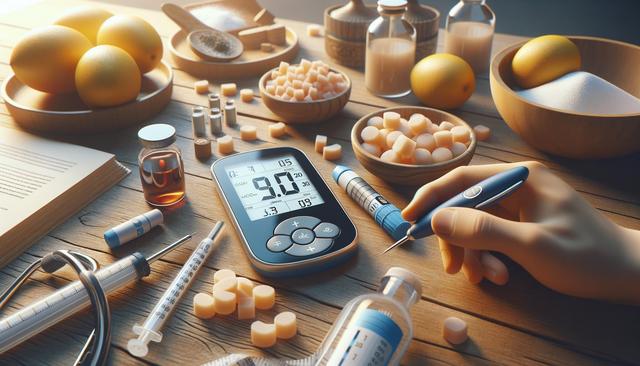Explore Continuous Glucose Monitoring
Learn about continuous glucose monitoring technology and prices

Understanding Glucose Monitoring Technology
Continuous glucose monitoring (CGM) is a significant advancement in diabetes care, offering detailed insights into glucose levels throughout the day and night. Traditional blood glucose meters provide only a snapshot of glucose levels at a specific moment, whereas continuous systems offer a dynamic view, capturing data at regular intervals. This allows for better glycemic control and can help in making timely decisions regarding diet, exercise, and medication. A New Glucose Monitoring System often includes a small sensor inserted under the skin, which measures glucose levels in the interstitial fluid. This sensor sends data to a receiver or a compatible smart device, enabling users to track glucose trends over time. As Glucose Monitoring Technology continues to evolve, users now benefit from more accurate readings, longer sensor wear times, and greater convenience.
How Continuous Glucose Monitors Work
Continuous Glucose Monitors (CGMs) typically consist of three main components: a sensor, a transmitter, and a display device. The sensor measures glucose levels at regular intervals, often every few minutes. The transmitter sends this information wirelessly to a device, such as a smartphone or a dedicated reader. Unlike fingerstick testing, which requires a manual blood sample, CGMs provide a continuous stream of data, making it easier to identify patterns and avoid extreme highs or lows. Some of the features commonly found in New Continuous Glucose Monitors include:
- Real-time glucose level tracking
- Customizable alerts for high or low levels
- Data sharing with healthcare providers or caregivers
- Integration with insulin pumps or health apps
These features make Continuous Glucose Monitoring Systems a valuable tool for individuals seeking more control over their diabetes management without the constant need for manual testing.
Benefits of Continuous Glucose Monitoring
The benefits of using Continuous Glucose Monitoring Systems extend beyond convenience. One of the most important advantages is the ability to track fluctuations in glucose levels during sleep, physical activity, or after meals — times when traditional monitoring might miss critical changes. This helps users make informed decisions that can reduce the risk of long-term complications. Additional benefits include:
- Improved HbA1c levels through better glucose control
- Reduced frequency of hypoglycemic events
- Enhanced understanding of how lifestyle factors affect glucose
- Increased engagement in self-care routines
For those managing complex diabetes regimens, particularly insulin-dependent individuals, the real-time feedback from Continuous Glucose Monitors can be a game-changer. The growing adoption of these devices reflects their potential to transform everyday diabetes management into a more proactive and personalized experience.
Comparing Features and Options
As the market for CGMs expands, users have access to a wide variety of systems, each offering unique features and capabilities. When considering a New Glucose Monitoring System, it’s important to evaluate factors such as sensor lifespan, calibration requirements, app compatibility, and cost. Some systems require daily calibration with a standard glucose meter, while others are factory-calibrated and ready to use out of the box. Affordability can also be a deciding factor. Prices vary based on features, brand, and whether the system is covered by insurance. Key considerations when comparing devices include:
- Sensor wear time (e.g., 7, 10, or 14 days)
- Water resistance and durability
- Mobile app integration and data visualization
- Availability of customer support and training
By carefully assessing these elements, users can choose among Continuous Glucose Monitors that align with their lifestyle, medical needs, and budget preferences.
Cost and Accessibility
While the benefits of CGMs are well-documented, cost remains a critical factor for many individuals. The initial investment in a New Continuous Glucose Monitor includes the transmitter, sensors, and in some cases, a reader. Ongoing costs primarily involve replacing sensors, which must be changed regularly based on the model. Fortunately, the growing availability of CGMs has led to more competitive pricing and expanded insurance coverage in many regions. Some government health plans and private insurers now cover part or all of the expense, especially for patients requiring intensive management. Tips for managing CGM costs include:
- Checking with insurance providers for coverage policies
- Exploring manufacturer assistance programs
- Comparing subscription plans or bundle offers
- Consulting healthcare professionals for recommendations
As Glucose Monitoring Technology becomes more accessible, more individuals can take advantage of its benefits without facing financial barriers. Increased awareness and education about these options are helping to close the gap and make advanced glucose monitoring available to a broader population.
Conclusion: Choosing the Right Monitoring Approach
Continuous Glucose Monitoring Systems are shaping the future of diabetes care by offering real-time insights and greater control. Whether newly diagnosed or managing diabetes for years, selecting the right technology requires a clear understanding of personal health goals, lifestyle needs, and financial considerations. As more people explore a New Glucose Monitoring System, it’s important to stay informed about the latest innovations and how they align with individual requirements. With a variety of Continuous Glucose Monitors now available, users can find options that deliver accurate data, practical features, and better support for long-term health management. Embracing Glucose Monitoring Technology can lead to more confident decision-making and a proactive approach to wellness.